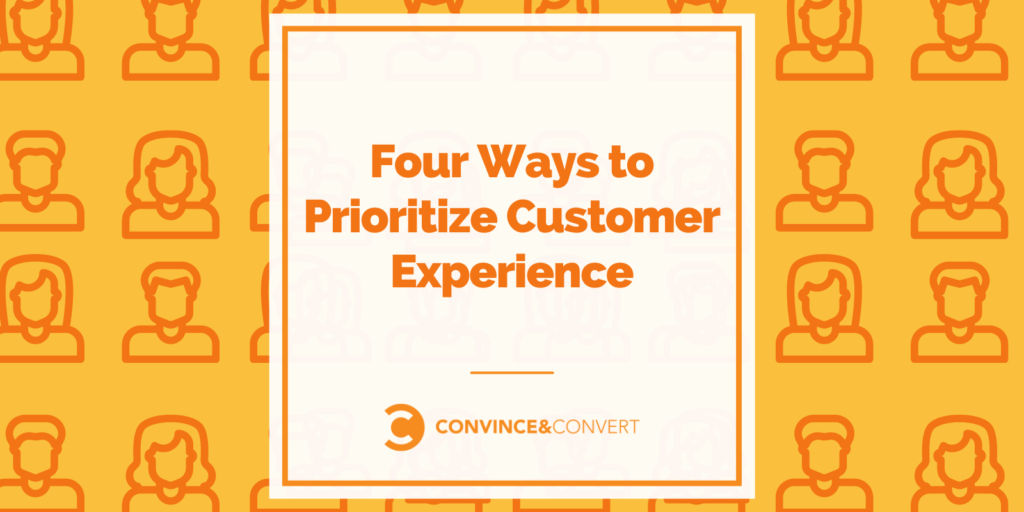
As many marketers will tell you, customer experience is a key topic of conversation in 2022. In reality, it’s always been at the core of what we do, but the last few years have upended what it actually means.
The pandemic accelerated us into the all-digital world, and marketers have had to sink or swim when learning to deal with an all-the-time (or always on) customer base. The first lesson learned? Implement a robust customer experience strategy that mirrors where and how customers prefer to engage your brand.
These days, customer experience doesn’t simply support the business; it is the business. Customer experience encompasses how companies engage with their customers during every single stage of the customer journey, and these days, there are plenty.
Marketing, sales, customer support — each touchpoint gives companies an opportunity to maximize their relationship with the consumer through building trust. It’s the common denominator. Trust can be crucial in maintaining customer loyalty, even when other parts of the business are lacking.
In short, building a strong customer experience can make or break your business. A recent Salesforce study reported that 79% of consumers agree the experience a company provides is as important as the products or services it sells.
Excellent customer experience is not a should. It’s a must.
No. 1: Recognize that the customer is always on, all the time
With the pandemic came an acceleration into the digital world. Customers are continually interacting with brands online, whether conscious of it or not. They’re scrolling past ads of those gym shoes they’ve been eying on their Facebook pages or watching a well-trusted Instagram influencer tout a new luxury handbag.
Customers are always engaging with you, whether they’re reaching out to your service desk or skimming your posts on social media. And they will continue to do so in even more insistent ways.
Take the metaverse, for example. The concept of the metaverse is to augment (some might even say, replicate) physical environments, allowing brands to better connect and collaborate with consumers in immersive and engaging ways. With that comes the need for companies to understand what their customers want out of these interactions.
Companies already are looking toward how they’re going to leave their footprint. Just look to premier athletic brand Nike, which has begun shaping its metaverse strategy by filing several trademark applications that will allow it to make and sell virtual Nike-branded shoes and apparel.
One thing is for certain: The customer is continually engaging with your brand. Companies would do best to remember that they too are “on” all the time, providing what the customer needs when the customer needs it.
And yes, that means in the metaverse, too.
No. 2: Establish accountability for CX efforts
With the increased focus on creating the ideal customer experience and the reality that trust can be cemented or broken across multiple stages of the relationship, there’s been an ongoing debate on which team is responsible — and accountable — for the customer experience. The answer? All of them.
Unless you’re willing to dedicate an entire role to the customer experience with a more holistic focus on the relationship (look to Grad Conn, chief experience and marketing officer of Sprinklr, as a great example), your teams are going to have a department-centric view of their role, which in turn creates a fragmented experience.
Pointless arguments over who owns the customer experience are getting us nowhere. Instead, your team’s energy should be spent determining how your department can take its seat at the table in designing and nurturing the experience from end-to-end. Customer experience is at its best when every single department treats it for what it is: the bedrock of a successful customer-brand relationship. And that bedrock is set by the executives, who must recognize that customer experience is at the core of a successful business.
The strongest customer experience teams are built of different roles that directly affect the CX. This effort not only includes marketing and sales but also product development, customer service and UX design. Customer experience, like many business practices, is strongest when it’s an organization-wide effort.
No. 3: Use proactive, not reactive, customer service as a key differentiator
Gone are the days of undercutting prices to stay on top.
Now, the businesses coming out ahead are the ones investing in their customer experience, so much so that spending on customer experience is expected to reach $641 billion by 2022. That’s a lot of (well-spent) money.
The challenge comes in the definition: What does a successful customer experience look like for your company? How do you provide meaningful moments of differentiating delight that keep your customers coming back for more? For some teams, effective CX could be engaging with customers via social media channels. For others, it might be always-on support for customers in the form of a company representative available as a post-purchase resource.
Regardless, customers want to know that they’re being taken care of. The brands consistently proving they can do so are the ones that stay top of mind. Take, for example, Amazon, Home Depot, Citibank and Salesforce — all of whom have found success by consistently showing up for their customers through their customer experience strategies.
At Ceros, we understand that our services organization is a key measurement of brand value. We recognize the need for further communication and engagement beyond the simple sales cycle, so we created two inclusive assets: Ceros Educate, a wealth of resources including detailed training lessons and simple, quick tips that our customers, and anyone else on the web, can use at any time; and the Inspire Gallery, where customers can go to get inspired by creative ideas to shape their own.
These resources show that we:
- Value our customer’s time. Let’s skip the lengthy customer service phone call if possible. Answers on-demand 24/7.
- Acknowledge the need for extended touchpoints. We won’t leave you high and dry. We’ve got your back.
- Want our customers to succeed. End of story.
No. 4: Don’t think of CX as a fleeting trend
If you think CX is only the latest trendy industry topic, that you can throw a little money at it and be successful, you’re in big trouble.
In order to be effective, customer experience needs to be approached as an ongoing, immovable foundation for your business strategy. Too often, business leaders are looking at customer experience through the singular lens of routine customer service: How can I optimize responses? How can I resolve customer issues quickly?
While effective conflict resolution is a large part of a strong, ongoing customer experience strategy, so too is the ability to provide trust and value. When evaluating customer journeys and considering where to invest in touchpoints, businesses must remember that intent is just as important as execution.
To build long-lasting relationships with customers, companies need to demonstrate that they care about their customers’ experience both now and well into the future, not just when it’s convenient or “trendy.”
When it comes down to it, customer experience is all about delivering experiences that delight customers on an emotional level when they interact with your brand. That’s what’s going to build loyalty, and loyalty is what’s going to keep customers coming back time and time again.

